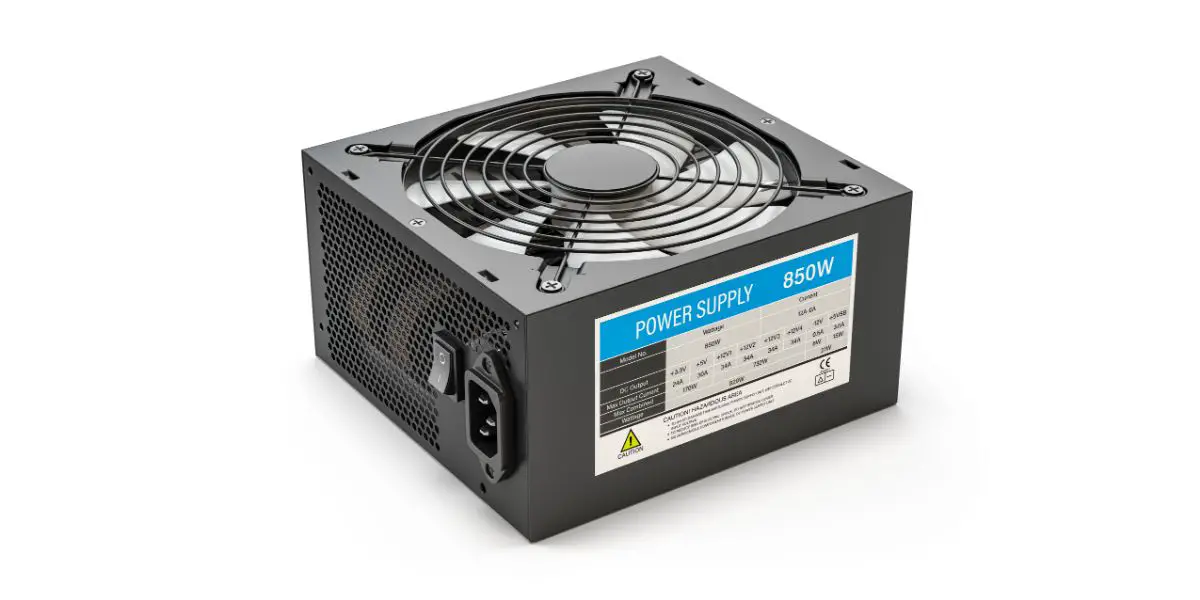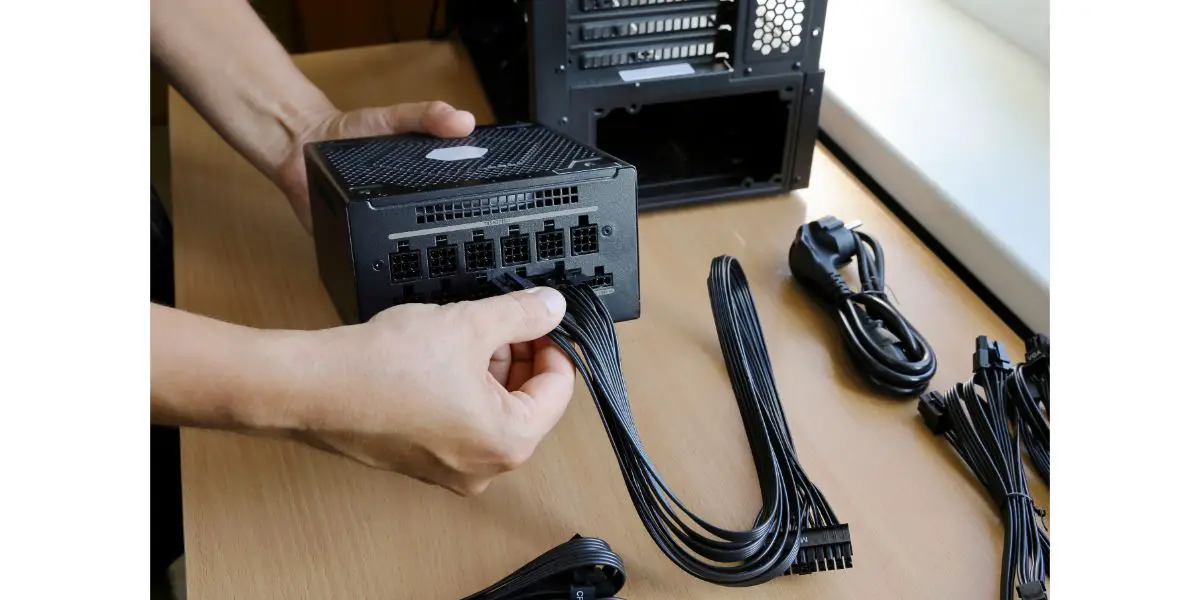Disclaimer: This post may contain affiliate links, meaning we get a small commission if you make a purchase through our links, at no cost to you. For more information, please visit our Disclaimer Page.
An excess of power can ruin devices and may even cause shortages and fires, which is why many are fearful of power supplies with excessive wattages, for they believe they can damage their device’s components.
A power supply can’t be too powerful. The higher the power supply wattage, the better, as a power supply will only draw the amount of wattage necessary.
Table of Contents
Is There Such a Thing As Too Much Power?
There isn’t such a thing as too much power, at least in the power supply industry. Even if your power supply is advertised to deliver 800 watts, it won’t deliver the full 800 watts to your device. It’ll only provide what the device demands.
In fact, getting a power supply with higher watts is better as you can usually plug in more devices at the same time. Another good thing about a device that demands wattage far from the maximum load is that the power supply components won’t strain themselves too much.
This means they can run optimally, for there’s very little overheating happening.
Is Insufficient Power More Dangerous?
The reverse of this, however, is what’s problematic. If your power supply cannot deliver what your device demands, it may cause damage to the components within your device.
Among the very first things you’ll experience are stalling and occasional crashes.
You must understand that the power supply is powering the motherboard that powers the CPU, the RAMs, and the fans. The power supply also powers the graphic processing units (GPUs), and the more GPUs you add, the more power is siphoned from the power supply.
For more information about power supplies, check out our other article here.
After the stalling, you may see your computer restart. This is your computer communicating that it can’t operate properly because it’s underpowered.
Then, you may see the blue screen of death (BSOD) after a couple of restarts. The BSOD shows up to tell you that there’s a critical issue the system continuously fails to resolve, which is why it keeps rebooting.
This process damages the GPU, and there are some who report motherboards being fried. This happens not really because of the lack of power, but because of the power surges that occur as the power supply tries to give the power demanded.
A burst of energy generates excessive heat, which damages your motherboard. And a damaged motherboard is often the end of your computer.
How To Choose the Right Power Supply
A lot of technical mumbo-jumbo can make getting the right power supply an overwhelming task. But, powering through it is worth it, as it helps ensure that your PC is kept in optimal condition.
Here’s how you can properly choose the right power supply:
Avoid Low-Quality Power Supplies
There are other factors to consider aside from the power supply power. If your power supply is ridiculously cheap, it will likely be made with cheap and low-quality components. The hazard of this is that the flow of electricity may not be as regulated properly.
This is why investing in a good power supply is important. Although it may set you back by a lot on purchase, you avoid spending way more in the long run.
Calculate the System Wattage
The first thing you need to take note of is the wattage. You can usually achieve this by calculating the entire system’s wattage, which can be done by getting the thermal design power (TDP) in the wattage of each part.
The thermal design power is the maximum heat for a PC component that the cooling system can still dissipate.
It’s tedious to manually input your computer parts on Google to look for the TDP, so you can use this power supply calculator instead. It contains several brands and makes your computer parts.
Now, it’s unlikely for you to hit the exact wattage that your computer needs. But, an estimate should already be sufficient to give you an idea of what type of power supply you should get.
Let’s assume that your calculated system wattage is about 670. Give it an allowance of around 150 to 200 when determining the power supply you should get. You should go for power supplies with 800 to 900 wattage by these calculations.
Alternatively, you can multiply the TDP of each of the parts by 1.5 and go for the lowest power supply wattage above the calculated system wattage.
As we’ve said earlier, investing in high-quality power supplies is absolutely worth it, so try not to thrift on the power supply, particularly if you’ve spent so much building your PC.
Determine Which Size Would Work Best
Another thing to consider would be the size. There are numerous sizes for power supplies, but the common ones you’ll most likely find in stores are the ATX and the SFX:
- ATX is a good fit for the full tower case and the smaller mid-tower. ATX power supplies are 150 mm in width and 86 mm in height, with the depth varying across brands.
- SFX, on the other hand, is generally smaller and has a fixed measurement for length, width, and height, unlike ATX. The dimensions are 125 mm (length), 100 mm (width), and 63.5 mm (height).
SFX caters to PC builders with cases so small that they cannot fit an entire ATX power supply.
Check the Efficiency of Power Supplies
Normally, you should see the 80Plus logo on power supplies. An independent body gives this certification to power supplies as a testament to how efficient they are.
The 80Plus standard measures how many of the watts entering the power supply are able to enter your PC and power up the components.
The reason why it’s called 80Plus is that 80% is the minimum efficiency for the power supply product to be given certification.
There are many tiers for this, beginning with the 80 Plus Standard (also called the 80Plus White), which should have an efficiency of 80% on 20% load and up to 82% efficiency when it comes to 50% load.
80Plus Bronze, on the other hand, reaches a peak of 85% efficiency on 50% load. 80Plus Silver and 80Plus Gold also reach peak efficiency at 50% load, which is 87% and 89%, respectively.
The highest tier is the 80Plus Titanium, the only one with an efficiency rating even at 10% load, at 90% efficiency. It even goes up to 94% efficiency when it’s at 50% load.
As you can see, power supplies become more efficient due to a more sophisticated network of parts such as capacitors and transformers. Because of this, power supplies with Gold and above certifications tend to be more expensive.
However, they save you some money on your electric bill since most of the electricity from your outlet can reach the different parts of your computer.
You may also notice that the power supplies are most efficient in 50% loads. This is why I advised you to give some allowance when choosing the correct wattage. As much as possible, you should only keep giving your power supply a load that’s half of its maximum load.
Conclusion
Luckily, you don’t need to worry about power supplies being too powerful, as your device will only siphon the needed wattage. You need to worry about underpowered power supplies, for they can damage your PC.


